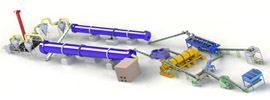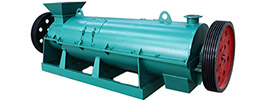1. Definitions and Core Principles
- Dynamic Batching Machine
- Definition: A device that dynamically weighs and adjusts material ratios during continuous conveying processes, suitable for uninterrupted production scenarios.
- Core Principles:
- Utilizes electronic belt scales or nuclear scales to dynamically monitor material flow rates, with PLCs or industrial computers adjusting feeder speeds via frequency inverters to maintain target ratios in real time.
- Emphasizes a closed-loop control system of "continuous feeding - dynamic weighing - real-time adjustment."
- Static Batching Machine
- Definition: A device that completes batch weighing in static conditions, designed for high-precision, multi-material blending requirements.
- Core Principles:
- Follows an intermittent workflow of "loading - stopping - stabilizing - discharging," using independent weighing systems for each material before centralized discharge.
- Prioritizes single-batch static weighing accuracy to eliminate dynamic interference.
2. Structural Differences
| Feature |
Dynamic Batching Machine |
Static Batching Machine |
| Structure |
Conveyor belt, dynamic scale, frequency inverter, PLC control system |
Multiple independent weighing hoppers, feeders, centralized conveyor belt |
| Key Components |
Dynamic load cells, frequency regulators |
Static weighing modules, microcomputer control system |
| Operation Mode |
Continuous material flow, non-stop operation |
Batch-wise static operation, periodic start/stop |
3. Workflow Comparison
Dynamic Batching Machine Process
- Continuous Feeding: Materials are transported via conveyor belt.
- Dynamic Weighing: Real-time flow rate monitoring by electronic scales.
- Feedback Adjustment: PLC adjusts feeder speed via frequency inverters.
- Continuous Output: Mixed materials are continuously discharged to downstream processes (e.g., mixers).
Advantages: No interruptions, high production efficiency for large-scale continuous operations.
Static Batching Machine Process
- Batch Loading: Feeders activate sequentially to load materials into hoppers.
- Static Weighing: Materials are weighed after stabilization.
- Centralized Discharge: All hoppers discharge simultaneously onto conveyor belt.
- Cycle Repetition: Process repeats for each batch.
Advantages: High single-batch accuracy, suitable for small-scale, multi-material blending.
4. Application Scenarios
Dynamic Batching Machine Applications
- Industries: Fertilizer production, coking, building materials, metallurgy, grain processing.
- Characteristics:
- Prioritizes ratio stability over dynamic accuracy.
- Optimized for throughput efficiency (e.g., concrete plants, continuous fertilizer lines).
Static Batching Machine Applications
- Industries: BB fertilizer production, chemicals, food, animal feed.
- Characteristics:
- Handles complex multi-material ratios with precision.
- Accepts intermittent operation for custom batches (e.g., lab-scale blending, niche products).
5. Accuracy and Efficiency Comparison
| Metric |
Dynamic Batching Machine |
Static Batching Machine |
| Accuracy |
±1%~±2% (affected by material flow) |
±0.1%~±0.5% (static stabilization) |
| Efficiency |
Continuous operation, high throughput |
Batch-based, longer cycle time per batch |
| Batch Suitability |
Large-scale continuous production |
Small-batch, multi-material production |
6. Control Systems and Features
| Feature |
Dynamic Batching Machine |
Static Batching Machine |
| Control Core |
PLC/industrial PC with real-time flow/cumulative monitoring |
Microcomputer/touchscreen with step-by-step hopper control |
| Key Functions |
Alarms, auto-adjustment, remote monitoring, report generation |
High precision, multi-formula storage, printable outputs |
| Scalability |
Integrates into fully automated lines |
Standalone use or paired with simple mixers |
7. Conclusion
- Dynamic Batching Machine: Prioritizes continuity and efficiency for large-scale continuous production (e.g., fertilizer, construction materials).
- Static Batching Machine: Emphasizes high precision and multi-material adaptability for small-batch, custom blending (e.g., food, specialty chemicals).
- Selection Criteria: Choose dynamic for uninterrupted throughput; opt for static when precision and material diversity are critical.
 Send us a Email
Send us a Email Wulong Industrial Cluster
Wulong Industrial Cluster Have any question?
Have any question?



















